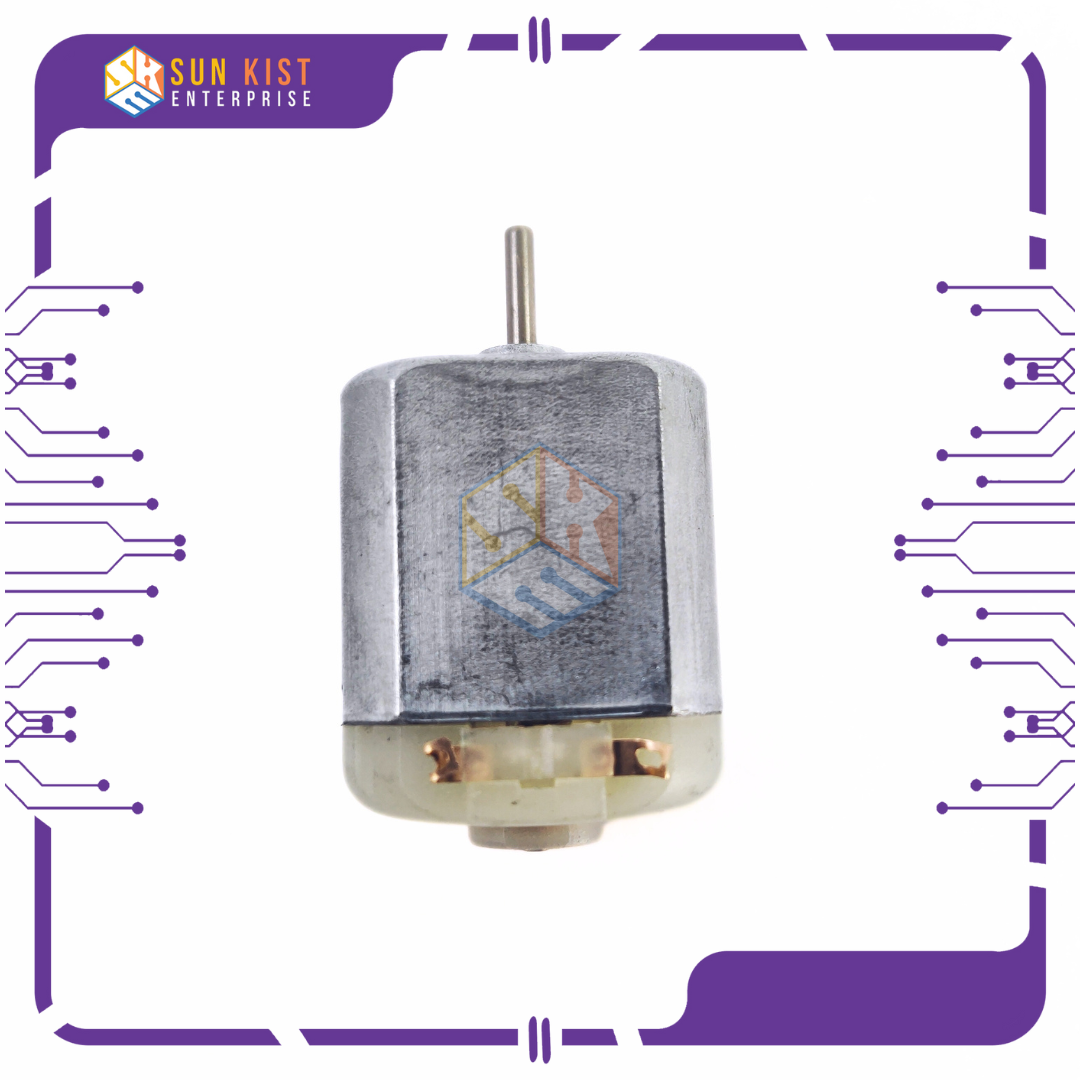Description
A **DC motor** is an electrical device that converts direct current (DC) electrical power into mechanical rotational motion. A **9V DC motor** is designed to operate at a voltage of 9 volts. Here’s a brief description of its key features and common uses:
**1. Voltage Rating:** The motor is designed to operate at a specific voltage, in this case, 9 volts. It’s important to match the motor’s voltage rating with the power supply to ensure optimal performance.
**2. Direction of Rotation:** DC motors can rotate in either a clockwise (CW) or counterclockwise (CCW) direction, depending on the polarity of the voltage applied to the terminals.
**3. Speed Control:** The speed of a DC motor can often be controlled by adjusting the voltage supplied to it. Lower voltage typically results in slower speeds, while higher voltage leads to faster rotation.
**4. Torque:** DC motors can provide a certain amount of torque, which is a measure of their rotational force. The amount of torque depends on the motor’s design and specifications.
**5. Applications:** DC motors are used in a wide range of applications, including robotics, toys, appliances, automotive systems, industrial machinery, and more. They are versatile and can be found in various devices and systems that require rotational motion.
**6. DIY Projects:** Hobbyists and electronics enthusiasts frequently use DC motors in DIY projects, such as building small robots, remote-controlled vehicles, or simple automation systems.
**7. Voltage Compatibility:** Ensure that the voltage supplied to the motor matches its rated voltage (9V in this case) to prevent damage or inefficient operation.
**8. Power Supply:** When using a 9V DC motor, you’ll need an appropriate power source, such as a 9V battery or an external power supply with a 9V output.
**9. Motor Control:** Depending on the application, you may need motor control circuitry, such as motor drivers or controllers, to manage the motor’s direction and speed.
**10. Mechanical Coupling:** To use the motor to perform a specific task, you might need to mechanically couple it to other components, such as wheels, gears, or levers.
In summary, a **9V DC motor** is a versatile component that’s commonly used in a wide range of applications. It’s capable of providing rotational motion and is frequently used in electronics and robotics projects, as well as various devices that require mechanical movement. Proper voltage matching and control circuitry are crucial for successful integration into a system or project.










